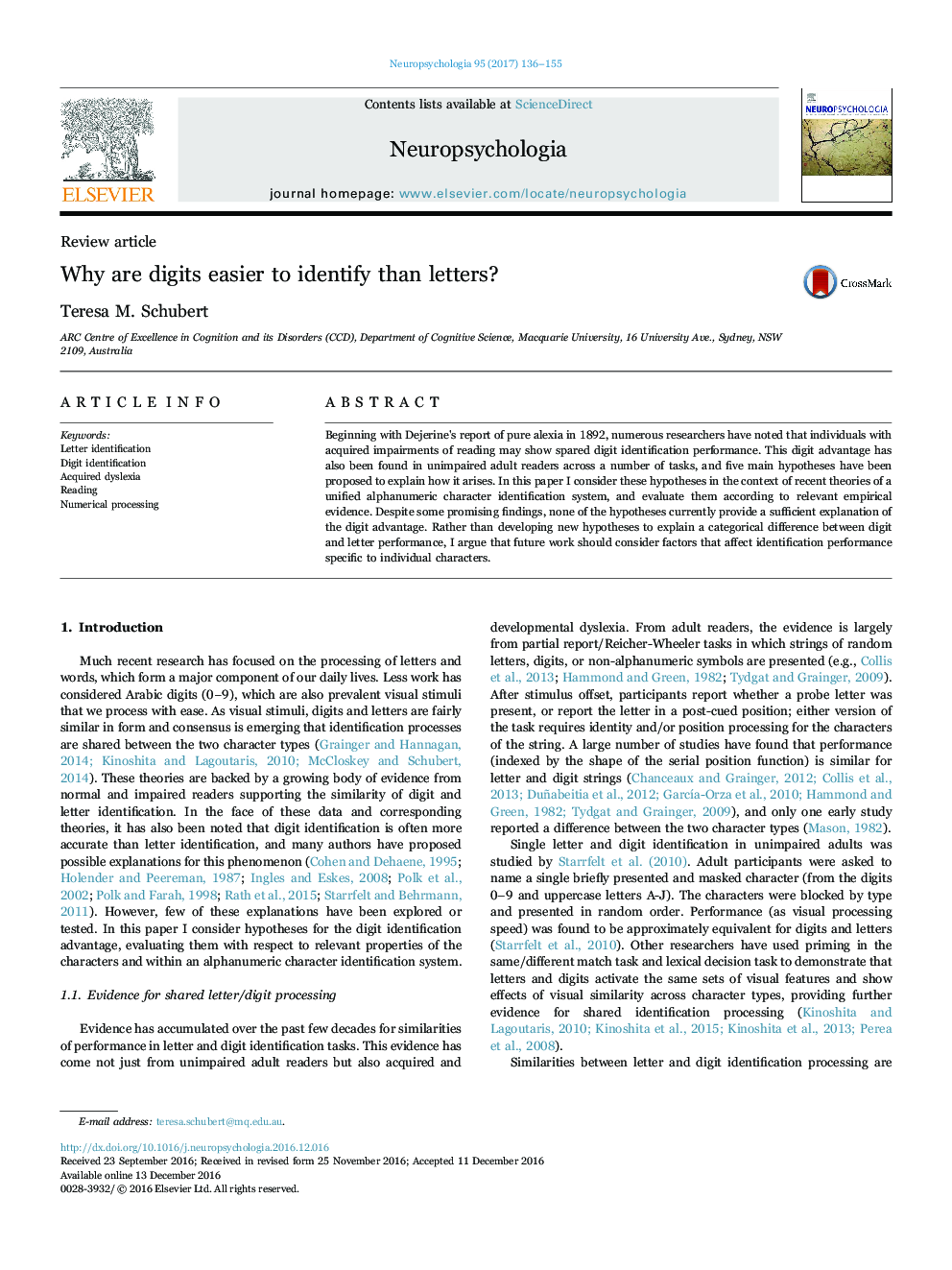| Article ID | Journal | Published Year | Pages | File Type |
|---|---|---|---|---|
| 5045179 | Neuropsychologia | 2017 | 20 Pages |
â¢An advantage for digit identification is found in dyslexia and unimpaired reading.â¢Previous hypotheses for the advantage are largely unable to explain the findings.â¢The reported categorical digit advantage may mask inter-character differences.â¢Future work should examine why some digits are identified easier than some letters.
Beginning with Dejerine's report of pure alexia in 1892, numerous researchers have noted that individuals with acquired impairments of reading may show spared digit identification performance. This digit advantage has also been found in unimpaired adult readers across a number of tasks, and five main hypotheses have been proposed to explain how it arises. In this paper I consider these hypotheses in the context of recent theories of a unified alphanumeric character identification system, and evaluate them according to relevant empirical evidence. Despite some promising findings, none of the hypotheses currently provide a sufficient explanation of the digit advantage. Rather than developing new hypotheses to explain a categorical difference between digit and letter performance, I argue that future work should consider factors that affect identification performance specific to individual characters.
